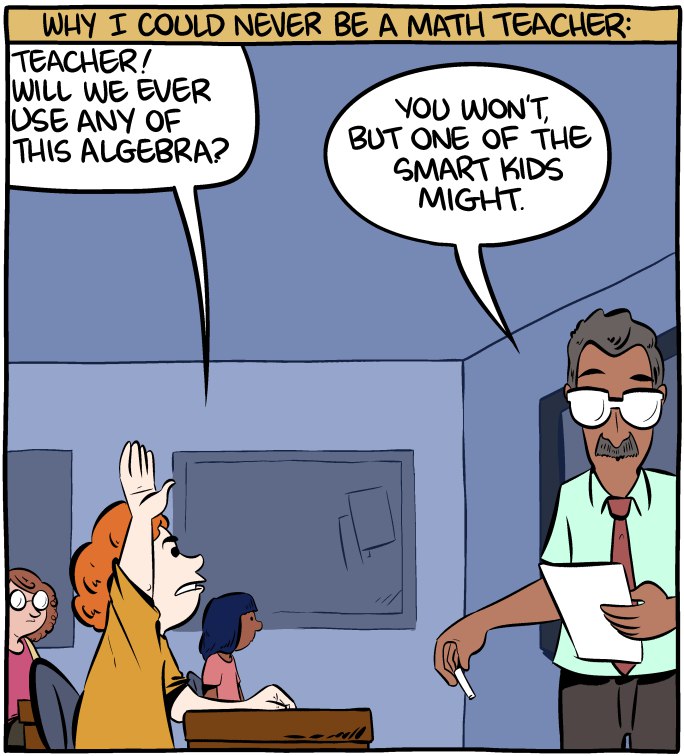Ranter
Join devRant
Do all the things like
++ or -- rants, post your own rants, comment on others' rants and build your customized dev avatar
Sign Up
Pipeless API

From the creators of devRant, Pipeless lets you power real-time personalized recommendations and activity feeds using a simple API
Learn More
Comments
-
@rutee07
gang gang. It's elementary school up in this bitch!
@Diactoros
Hell if I know. I can barely math at all.
Edit: I used python nipple operate (**), instead of tiny hat operator (^)
Derp. -
@Wisecrack Anyone with a math background knew what you meant. I’m not python literate though so I did have a moment of confusion. Interesting find.
-
@Diactoros Whats your background in math, if you don't mind me asking? It's exciting to meet people who are familiar with the subject and maybe enjoy it, and not just read anonymous posts on quora/wikipedia/textbooks written by strangers.
-
@Lor-inc
Haven't checked but now I have to.
They tend to share 1 or 2 digits in the mantissa, and when they don't, those digits at least tend to be in order, e.x.
...15..
...16...
...17..
Which makes sense if assuming a is the lower factor of p and b is the higher factor. (assuming p only has only four factors, a, b, p, and 1), because a/√p == b/√p -
Addendum
I was actually hoping what I could do was use it as a good starting point to factor p, by solving for the base of the logarithm.
Where a or b (p's factors) are the respective bases.
w**(1/w)
a**(1/w)
b**(1/w)
also tend to share digits, especially where
w**(1/p) fails.
Related Rants

 Math is hard.
Math is hard. When you wanted to know deep learning immediately
When you wanted to know deep learning immediately :)) finally a good answer
:)) finally a good answer
More masturbation with numbers.
If you take some product p,
and do
√p**(1/p)
and it's factors
a**(1/p)
and
b**(1/p)
you might find something interesting.
Take for example
a=21977
b=43331
p=a*b=952285387
(√p)**(1/p) = 1.0000000108551363
a**(1/p) = 1.0000000104986928
b**(1/p) = 1.0000000112115799
More often then not, a, b, or both, will share one or two of the most significant digits in the mantissa, as the root of p.
It doesn't always work, but it seems to be true more often than you might expect.
This is probably obvious in hindsight but I still think it's cool.
In some instances if you then do, say
sqrt(log(p, 1.000000010)), it comes pretty close to the original factors, but thats really hit or miss.
random
math